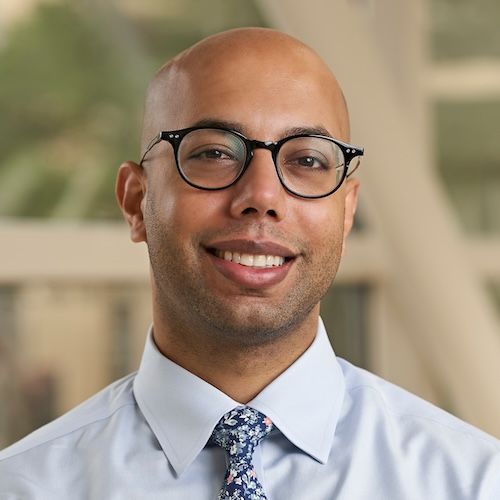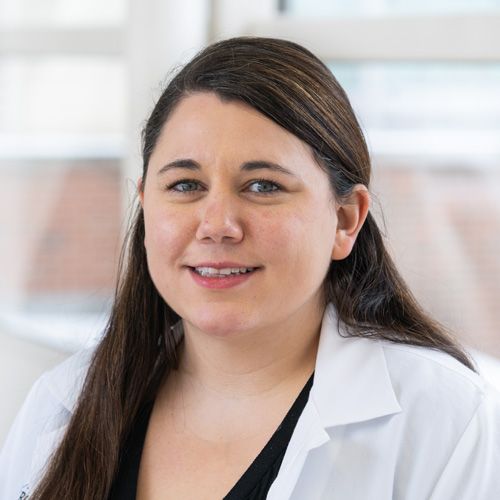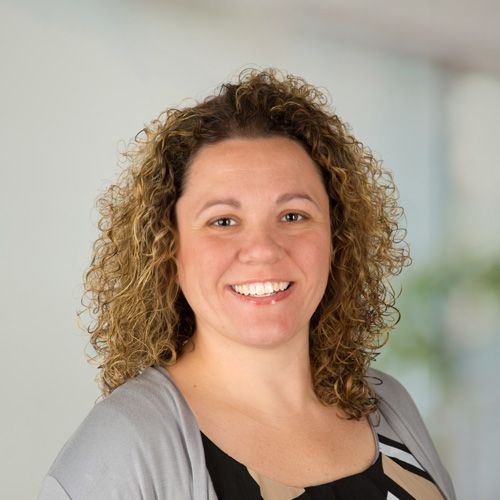Offering comprehensive care and surveillance, supportive services and access to the latest neurofibromatosis treatments — in one location.
Make an appointment Learn about genetic screening Meet the team
What the neurofibromatosis clinic provides
Our clinic offers multispecialty care for adults with any form of neurofibromatosis (NF), including NF1, NF2 and schwannomatosis.
- Experienced diagnostic radiologists to provide and review consistent, high-quality imaging studies, including whole body, brain, and spine MRI. These specialists offer prompt, accurate diagnosis to speed the path to appropriate treatment.
- Comprehensive clinical care in one location from providers with unique expertise in diagnosing and treating tumors, including:
- Medical and surgical oncologists specializing in soft tissue tumors
- Neurosurgeon and neuro-oncologist specializing in tumors of the brain and spine
- Clinical geneticist to confirm diagnosis, plan treatment and guide testing of other family members
- Plastic & reconstructive surgeon to offer options for tumor removal and improved appearance
- Supportive care services to address physical, emotional and practical impact of the disease, including:
- Pain management
- Social work
- Young Adult cancer program
- Cancer screening and surveillance, including referral to:
- High Risk Breast Cancer clinic (yearly mammography starting at age 30 in patients with NF1)
- Annual imaging, including whole body MRI in patients with NF1
- Appropriate lab tests to screen for tumors of the endocrine system
- Access to the latest treatments through participation in clinical trials.
What is neurofibromatosis?
Neurofibromatosis is an inherited genetic condition that leads to the development of nerve tissue tumors in several body areas. These tumors manifest in broad and diverse ways and while most are noncancerous, they may press on nerves and other tissues, resulting in pain, scoliosis of the spine, learning disabilities, vision and hearing loss and extensive skin growths.
Some of these nerve tumors, however, do become malignant, and the condition increases risk for other cancer types such as breast and pheochromocytoma, a rare cancer of the adrenal gland.
Lifelong monitoring, early cancer detection and timely treatment is essential for optimal survival and quality of life. Our goal is to bring the experts to you in a single visit, recognizing that each visit to a specialist means time away from work or family, and we aim to streamline your experience as much as possible.
We take a comprehensive approach, looking at the big picture of what it means to have neurofibromatosis, managing issues specific to NF while also monitoring your health as a whole person.Lindsay Lipinski, MD, FAANSAssistant Professor of OncologyDepartment of Neurosurgery
Symptoms of neurofibromatosis 1 (NF1)
Most people with NF1 are diagnosed at birth or early childhood, although the condition progresses with age. Signs of NF1 include:
- Several “café au lait” spots, light-brown pigmented skin areas, appearing most commonly on the chest, back, pelvis, elbows and knees
- Freckling under the arms or in groin the area
- Pea-sized bumps (neurofibromas) on or just under the skin
- Flesh colored skin tags and growths
- Larger areas of swelling on or under the skin
- Growths in the eye’s iris (Lisch nodules)
- Bone abnormalities such as bowed legs, scoliosis of the spine and thinning of the shin bone
- Vision problems
- Learning disability, speech problems or hyperactivity
- Unusually large head
Symptoms of neurofibromatosis 2 (NF2)
People with NF2 oftentimes do not experience symptoms until adolescence or early adulthood. Signs of NF2 include:
- Problems with balance and walking
- Dizziness
- Headache
- Hearing loss
- Facial weakness
- Numbness or pain
- Ringing in ears
- Learning difficulties
- Cataracts at a young age
Symptoms of schwannomatosis
People with schwannomatosis usually don’t experience symptoms until adulthood. Rather than in or on the skin, the tumors develop deeper in the body along major nerves. Tumors can develop anywhere but are often noticeable in the arms or legs. Signs of schwannomatosis include:
- Lumps in the arms or legs
- Pain related to tumors
- Numbness, weakness
- Muscle atrophy
Meet the NF team
Jacobs School of Medicine & Biomedical Sciences















